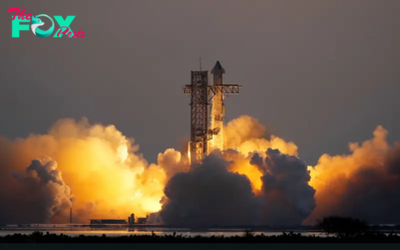Science
We're one step closer to finding out why Siberia is riddled with exploding craters
Enormous craters in Siberia's permafrost may finally have a decisive explanation. They form when pressurized water causes cracks to form in the permafrost, triggering a sudden, explosive release of methane gas, scientists say.
The Mysterious craters measure 160 feet (50 meters) deep and up to 230 feet (70 m) across, and first appeared on Russia's northern Yamal and Gydan peninsulas in 2014. Chunks of rock and ice strewn across the landscape around the craters indicated they were caused by giant explosions. These strange craters have never been found elsewhere in the Arctic.
Now, new research may finally explain why these explosions only occur in Siberia.
"These are very, very specific conditions that allow for this phenomenon to happen," study co-author Ana Morgado, a doctoral student and chemical engineer at the University of Cambridge in the U.K., said in a statement. "We're talking about a very niche geological space."
No matter how niche, the explosions could trigger a climate feedback loop leading to huge releases of the powerful greenhouse gas methane.
Related: Thawing Arctic permafrost could release radioactive, cancer-causing radon
"This might be a very infrequently occurring phenomenon," Morgado said. "But the amount of methane that's being released could have quite a big impact on global warming."
-

 Science2d ago
Science2d agoInside Capitol Hill’s Latest UFO Hearings
-

 Science2d ago
Science2d agoYou Won’t Want to Miss the Leonid Meteor Shower. Here’s How and When You Can See It
-

 Science3d ago
Science3d agoHere’s What Trump’s Win Means for NASA
-

 Science6d ago
Science6d agoWhy Risky Wildfire Zones Have Been Increasing Around the World
-

 Science6d ago
Science6d agoIt’s Time to Redefine What a Megafire Is in the Climate Change Era
-

 Science1w ago
Science1w ago4 Astronauts Return to Earth After Being Delayed by Boeing’s Capsule Trouble and Hurricane Milton
-

 Science1w ago
Science1w agoThe Elegance and Awkwardness of NASA’s New Moon Suit, Designed by Axiom and Prada
-

 Science1w ago
Science1w agoSpaceX Launches Its Mega Starship Rocket. This Time, Mechanical Arms Catch It at Landing



























